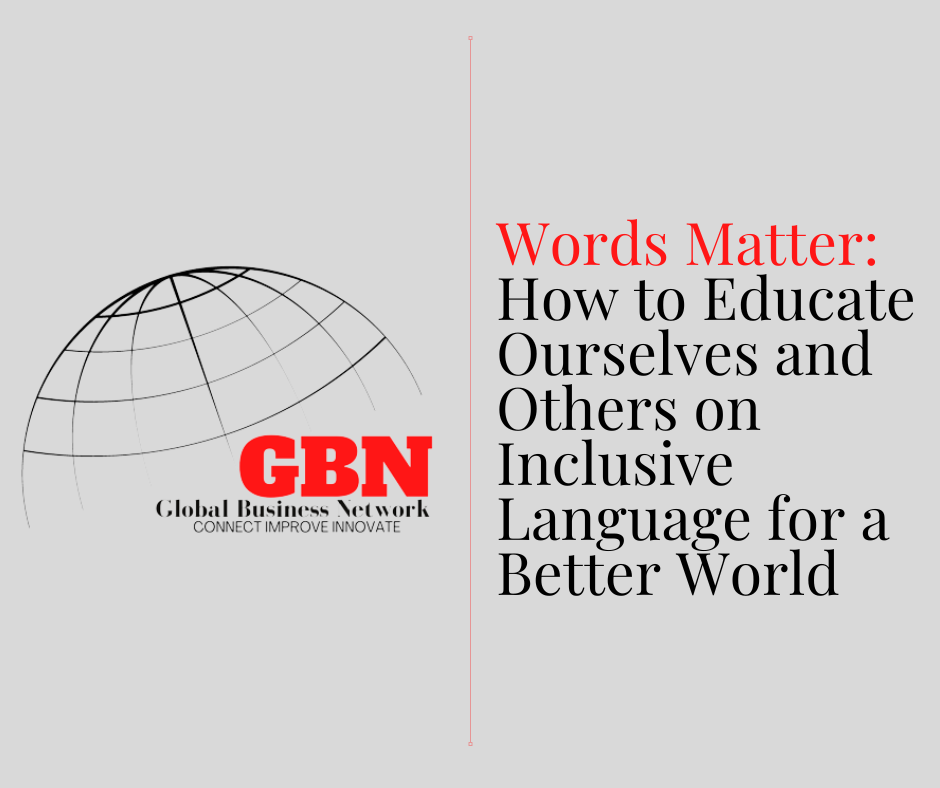
Words Matter: How to Educate Ourselves and Others on Inclusive Language for a Better World
Inclusive language isn’t just a trending topic; it’s a powerful tool that fosters respect, empathy, and connection in an increasingly diverse world. Learning about and using inclusive language can help break down barriers, build stronger communities, and support a culture of acceptance and understanding. Here’s an actionable guide on how to educate ourselves and others about the significance of inclusive language.
1. Start with Self-Education
- Read and Research: Begin with resources that define inclusive language and highlight why it matters. Books, reputable articles, and videos on inclusive language are widely available and provide an excellent foundation.
- Challenge Assumptions: Notice any language patterns or habits that might be unintentionally exclusive. Reflect on common phrases or terms, and research inclusive alternatives.
- Engage in Active Listening: Pay close attention to conversations where inclusive language is used. Observing how others practice it can inspire changes in our own communication.
2. Create Safe Spaces for Open Dialogue
- Encourage Questions Without Judgment: People might feel hesitant about what terms are correct. Create environments where questions about inclusive language are welcomed and answered respectfully.
- Use Real-Life Scenarios: Share examples of inclusive versus non-inclusive language. Practical examples help people see the tangible effects of language choices.
- Acknowledge Mistakes: Remind everyone that it’s okay to make mistakes while learning. Apologize, correct, and move forward.
3. Incorporate Training in Schools and Workplaces
- Develop Workshops: Advocate for schools and companies to implement regular workshops on inclusive language. Including interactive sessions with role-playing exercises can make learning dynamic and memorable.
- Use Resources Like Guides and Posters: Inclusive language guides and posters can be effective reminders and resources for ongoing learning. Place them in visible areas to reinforce their importance.
- Promote Leadership Buy-In: Having leadership participate in or even facilitate inclusive language training shows commitment and encourages broader adoption.
4. Leverage Social Media and Online Resources
- Follow and Share Content from Educators and Advocates: Many educators and influencers provide valuable insights and updates on inclusive language. Following and sharing their content can broaden knowledge and inspire discussions.
- Use Platforms to Amplify Awareness: Post or share articles, infographics, or personal experiences that highlight the positive impact of inclusive language. It’s a great way to reach a wide audience and spark interest.
- Encourage Interactive Challenges: Consider engaging in or creating online challenges, like “30 Days of Inclusive Language,” where each day, you learn and share a new inclusive term or phrase.
5. Practice Mindfulness in Everyday Communication
- Pause and Think Before Speaking: Take a moment to reflect on word choice in real-time conversations. This habit can prevent unintentional language that may feel exclusive to others.
- Correct Gently, but Firmly: If someone uses non-inclusive language, correct them in a way that is educational rather than accusatory. For example, “Actually, many people now prefer [term], as it’s more inclusive.”
- Lead by Example: Practicing inclusive language in day-to-day interactions encourages others to follow suit. People are often more receptive to change when they see it in action.
6. Engage in Community Discussions
- Organize and Attend Inclusive Language Events: Participating in events or discussion panels about inclusive language helps connect people with shared goals and fosters a supportive learning environment.
- Encourage Feedback Loops: Offer ways for people to share their thoughts on language inclusivity openly. This can be a feedback box at work or an anonymous survey in social groups.
- Advocate in Policy Changes: Support community groups or initiatives advocating for inclusive language in public policies, schools, and workplaces.
Final Thoughts: The Power of Intentional Words
Inclusive language is about more than just words; it reflects our respect for each individual’s identity and experience. By committing to learning and promoting inclusive language, we are not only improving our own interactions but also creating a culture that values empathy and equity.





